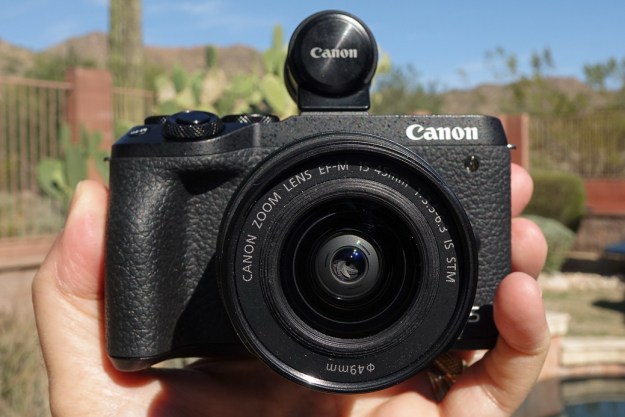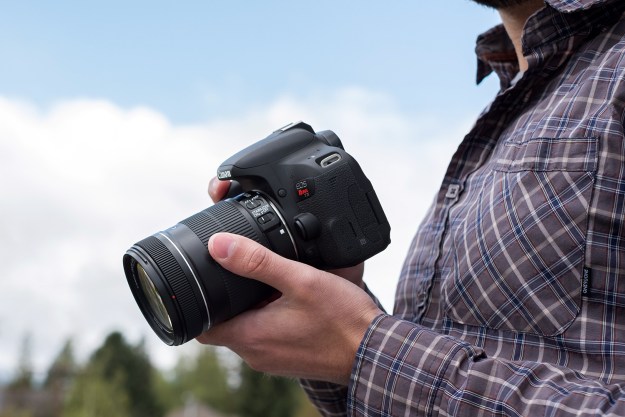
Eight years after ending actual production of film cameras, Canon has discontinued the company’s last film SLR. Canon Japan recently announced the end of sales for the Canon EOS-1V, a pro-level film SLR — and the company’s last remaining film option.
The end of the ability to buy a brand new (unused but stored for eight years) Canon EOS-1v is a notable, nostalgic moment for the company and Canon photographers. Canon hasn’t produced a new film camera since 2010 but continued to sell the SLR from the remaining stock over eight years. An official announcement from Canon Japan gives the EOS-1V a casual death. “By the way,” the Google translated support page reads, “we are finally decided to end sales for the film single reflex camera EOS -1v.”
The company will continue to repair the film camera until 2025 unless parts run out. The discontinuation, of course, also doesn’t end the secondhand market, a popular option for photographers looking for film.
The EOS-1v is now 18 years old after the 2000 launch, the fifth generation in the high-end series. Canon’s current digital lineup still carries the EOS name, a line that’s now over 30 years old. The EOS line, which stands for Electro Optical System, created the first electronic connection between the body and the lens. For film, that meant replacing levers and pins with electronics. As the line expanded into digital, the concept of that electrical connection allowed the camera lenses’ metadata to be included in the image’s EXIF.
The EOS 1 line was the professional model from Canon, a naming trend that continues with the Canon 1D-X series for digital bodies. Digital photographers that want to experiment with film can also use the same EOS lenses on both film and digital bodies (depending on the lens, some features aren’t compatible).
Canon didn’t say just how many EOS-1V bodies were left after manufacturing was discontinued, or if they ran out of the camera or just decided to end sales. But according to reports, the company’s stash of the film body lasted eight years.
Photographers still pick up film cameras for a handful of reasons, including the aesthetic as well as using film as a learning tool. The secondhand market is a popular option for film enthusiasts because it allows for picking up film bodies at a lower price point. Nikon, for example, is still selling film bodies, but at about $570 for the FM10 and $2,670 for the F6.
Canon’s discontinuation is notable, but not exactly the death of film. Along with Nikon still selling film cameras, instant film continues to be a popular option. Smaller companies have also stepped into the industry, such as MiNT’s used camera refurbishing and the list of film cameras trying to get a start with crowdfunding, such as the Reflex and Rolleiflex’s return with a twin-lens instant film camera.
Editors' Recommendations
- Canon’s Ivy Cliq+ 2 instant camera can print circular stickers
- Should you buy the Canon EOS R5 or EOS R6? The new mirrorless options compared
- After years of waiting, Sony A7S III may arrive this summer
- The best Canon cameras
- The unrestrained 1D X Mark III proves Canon still knows how to lead. Will it?




